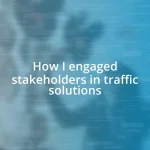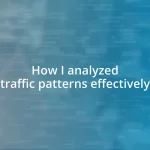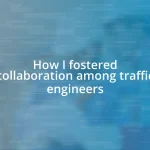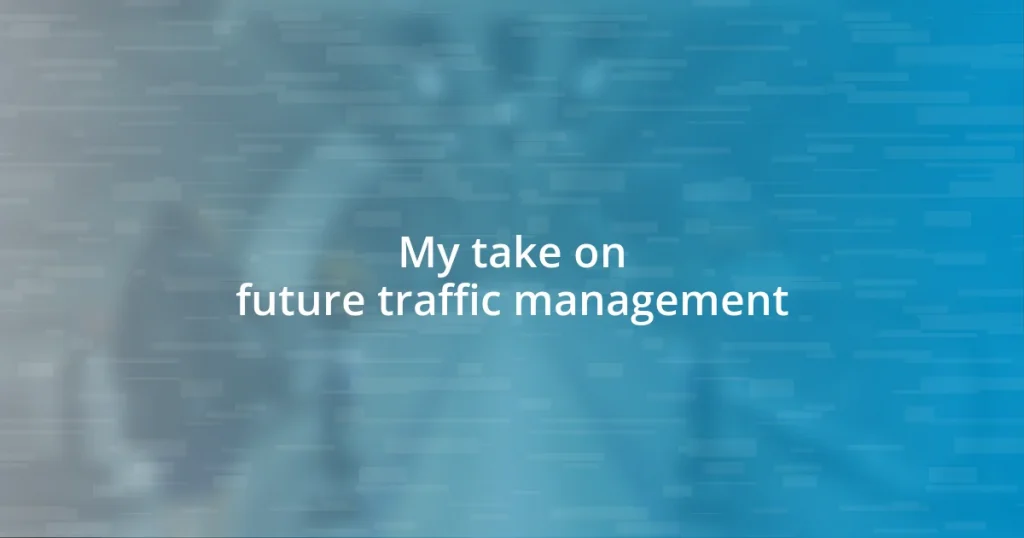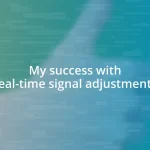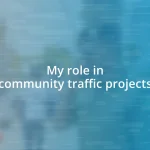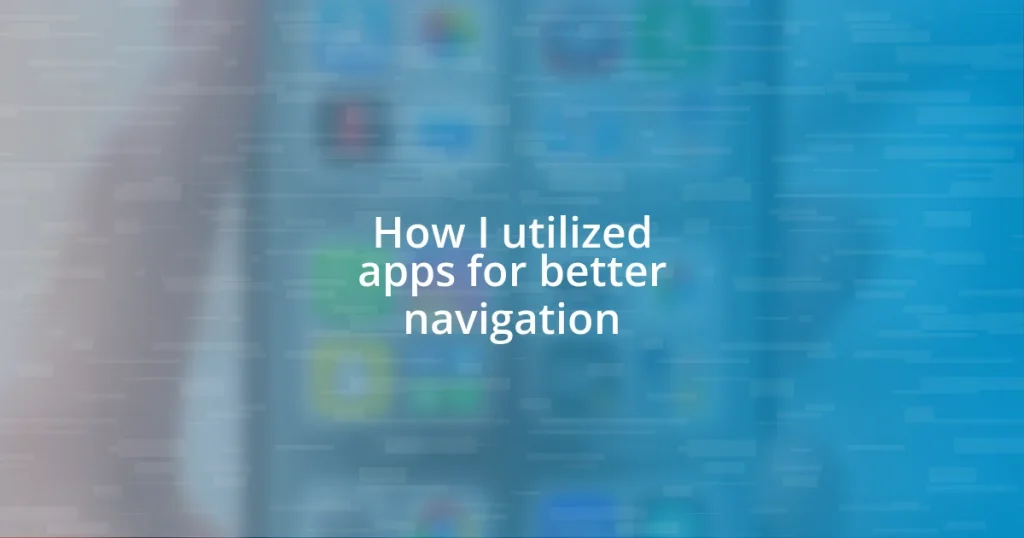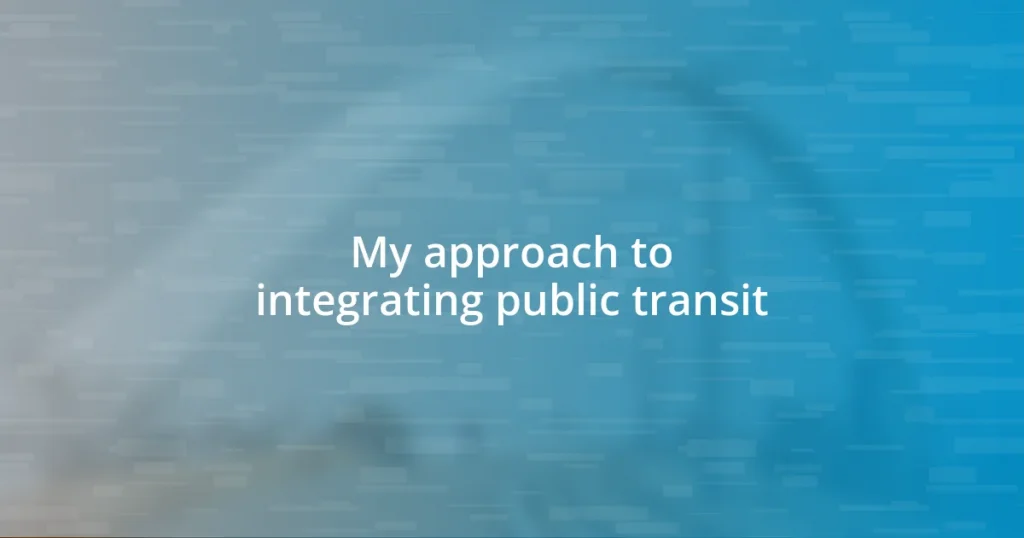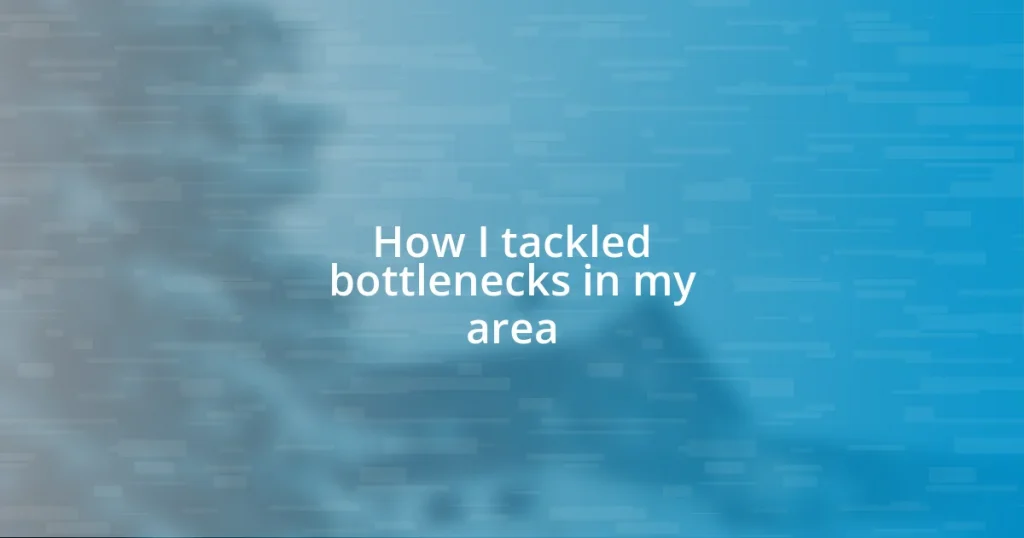Key takeaways:
- Future traffic management relies on innovative technology such as adaptive signals and real-time data, enhancing urban mobility and reducing congestion.
- Key challenges include outdated infrastructure, increasing vehicle volume, and community resistance to adopting new technologies.
- Autonomous vehicles have the potential to transform transportation safety and efficiency through communication with smart infrastructure, promoting a vision of safer, stress-free travel.
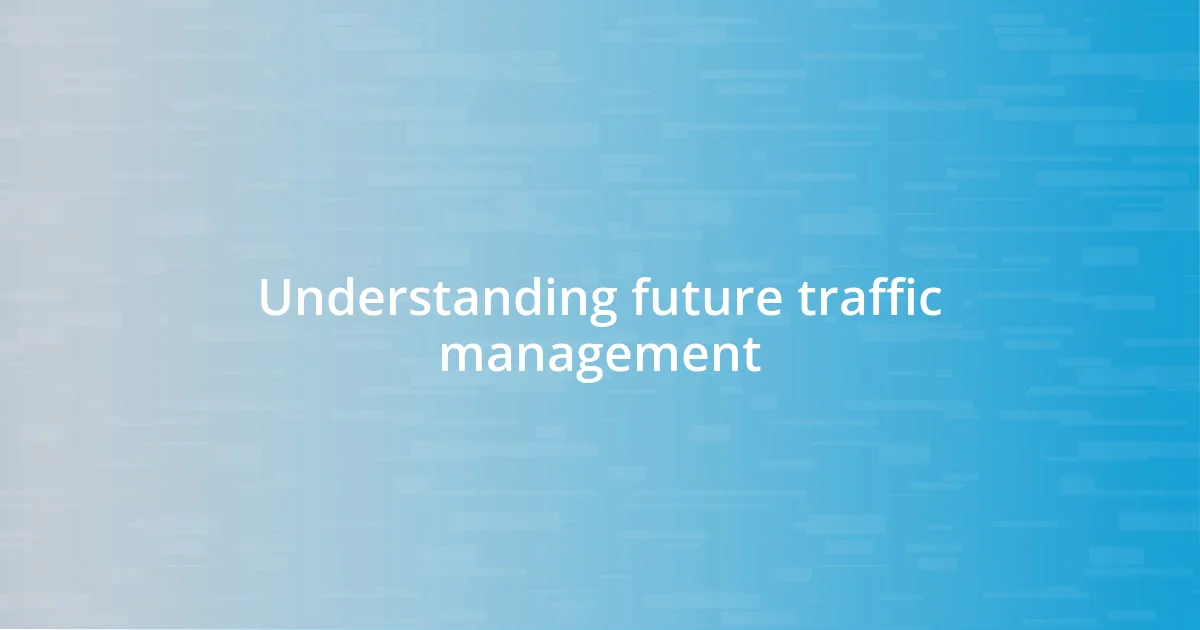
Understanding future traffic management
Future traffic management blends innovative technology with a deeper understanding of urban dynamics. I often find myself wondering: how can cities, growing every day, effectively manage the flood of vehicles? The challenge lies not just in the numbers but in creating a harmonious flow that enhances our daily commute while reducing stress and environmental impact.
As I reflect on my own experiences with congested roadways, it’s clear that future solutions must prioritize smart traffic signals and real-time data analytics. Imagine a world where your car communicates with traffic lights, adjusting signal times based on actual traffic flow. This coalescence of technology gives me hope; it feels almost like a dance, where vehicles and infrastructure move in sync.
In addition, I’ve been intrigued by the concept of integrated multimodal transport networks. Picture hopping on a bike after a quick train ride, with seamless transitions that eliminate bottlenecks. This integration isn’t just about convenience; it’s about building communities where mobility is effortless and sustainable, making me excited for what the future holds.
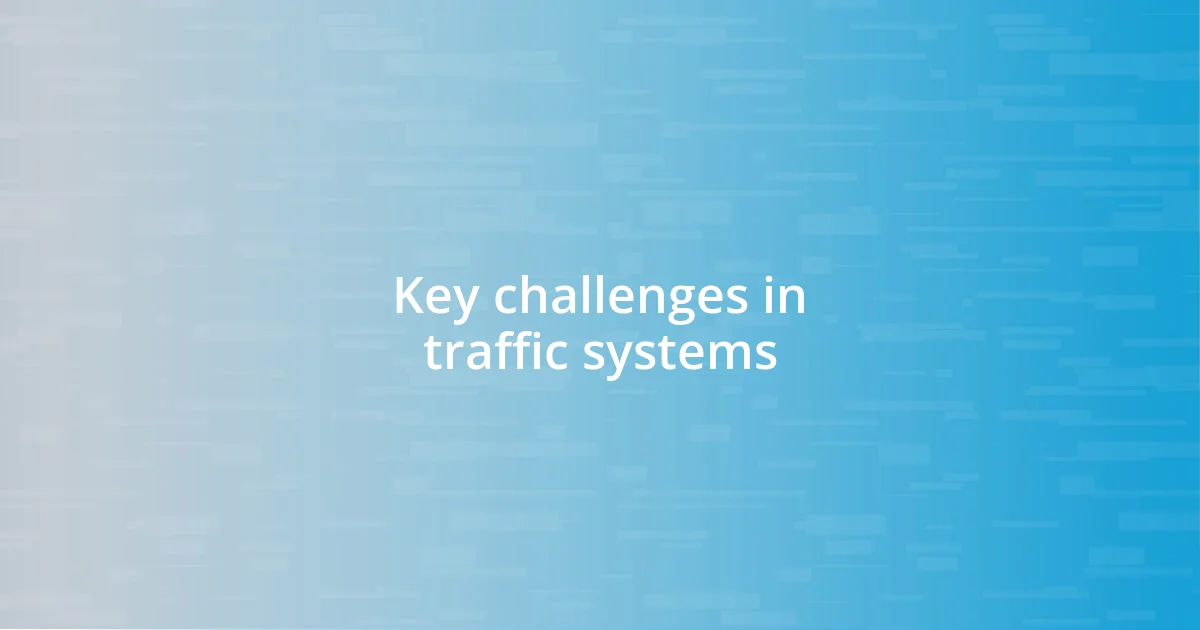
Key challenges in traffic systems
Managing traffic systems faces several key challenges that can really complicate the daily commute. As I navigate through urban environments, I often find that the biggest hurdle is outdated infrastructure. Sitting in traffic has become a common frustration for many of us. I recall a particularly grueling day last summer, where I spent over an hour in a single intersection that really felt like a bottleneck in the city’s heart. It’s not just inconvenience; it’s an issue that impacts air quality and our mental well-being too.
Another significant challenge is the increasing volume of vehicles on the road. It’s mind-boggling to consider how many cars are added to urban streets each day. I once attended a talk about smart city solutions, where the speaker highlighted that cities are designed for 20th-century traffic, while we now operate in an age of exponential growth and technological change. This widening gap between roads built for yesterday’s traffic and today’s demands can feel overwhelming, but I believe it also inspires innovative thinking.
Finally, the integration of technology into traffic systems often faces resistance. While many of us are eager to adopt new solutions, I’ve seen firsthand how communities can hesitate to embrace change. It reminds me of a neighborhood meeting I attended where residents discussed the pros and cons of installing smart traffic lights. The mix of excitement and skepticism in the room was palpable. Balancing these perspectives is crucial for developing solutions that truly benefit everyone.
| Challenge | Description |
|---|---|
| Outdated Infrastructure | Many urban areas struggle with infrastructure that can’t accommodate current traffic volumes. |
| Increasing Vehicle Volume | Continued growth in the number of cars leads to congestion and environmental concerns. |
| Resistance to Technology | Communities often hesitate to adopt new technologies, impacting implementation. |
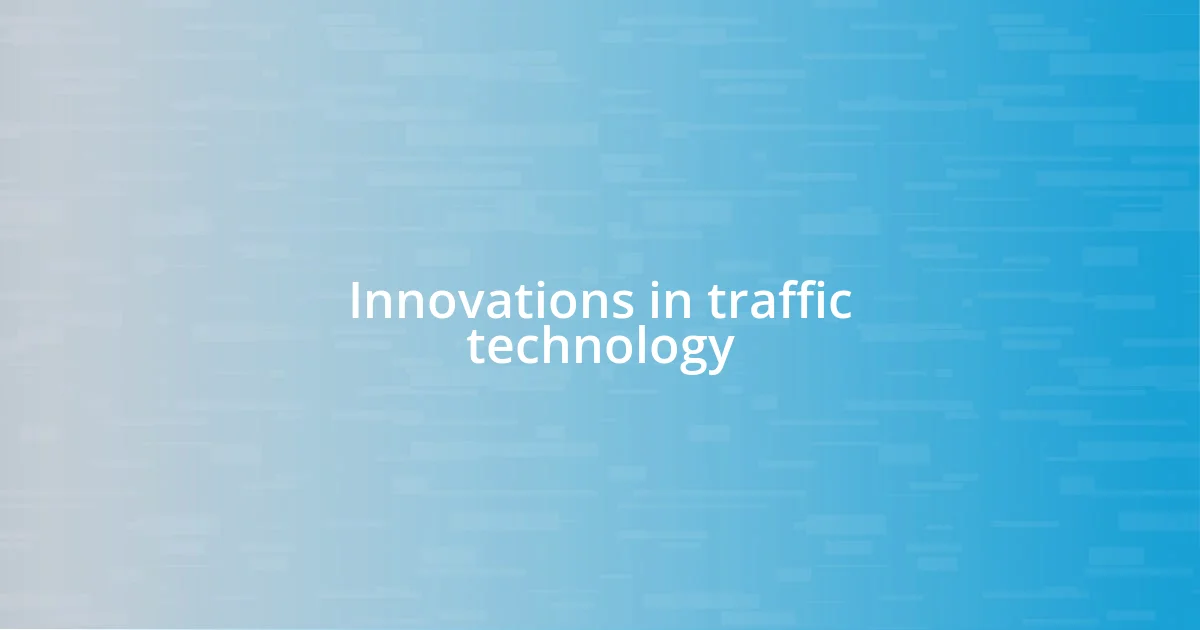
Innovations in traffic technology
The innovations in traffic technology are fascinating and hold immense promise for the future of urban mobility. I vividly remember a recent trip where I encountered an intelligent traffic management system that used real-time data to adjust traffic light timings. Watching cars flow smoothly instead of halting at red lights was a revelation. It struck me how this technology can ease frustration and enhance overall safety. I feel like we’re at the cusp of a major transformation where vehicles and infrastructure communicate seamlessly, almost like a well-orchestrated symphony.
Some of the most exciting developments include:
- Adaptive Traffic Signals: These signals adjust in real-time based on actual traffic flow, reducing congestion and wait times.
- Connected Vehicles: Cars equipped with communication technology can relay information to traffic management systems, optimizing routes and preventing gridlock.
- AI-Powered Traffic Analytics: Advanced algorithms analyze real-time data to predict traffic patterns, allowing city planners to make informed decisions.
- Pedestrian and Cyclist Monitoring: Sensors can detect the presence and movement of pedestrians and cyclists, enabling safer crossings and bike lanes.
- Smart Parking Solutions: Applications that inform drivers about available parking spots can reduce the time spent searching for parking, ultimately easing traffic.
As I delve deeper into these innovations, it becomes clear to me that the integration of such technologies could fundamentally reshape the way we think about daily commutes. There’s a certain excitement about the possibilities—like stepping into a future that not only promises enhanced efficiency but also a more enjoyable experience on the road.
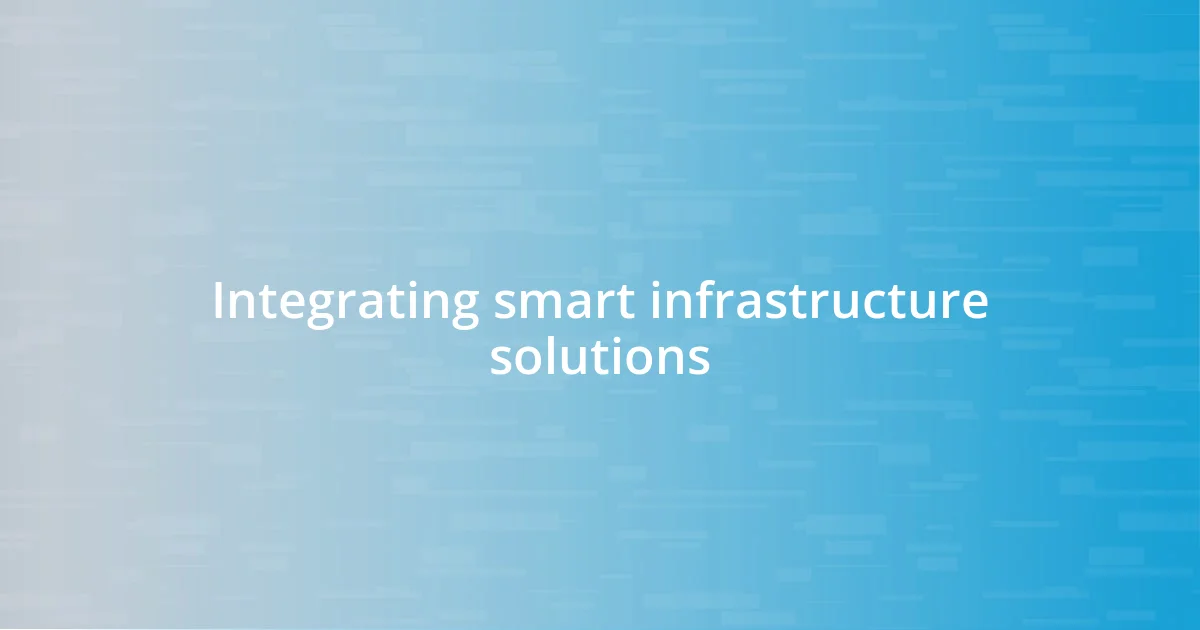
Integrating smart infrastructure solutions
Integrating smart infrastructure solutions is not just about upgrading technology; it’s about creating a cohesive ecosystem that works for everyone. I remember visiting a city that had implemented smart streetlights that not only adjusted based on traffic flow but also spoke to emergency vehicles to clear a path. It was impressive to witness how these changes could minimize response times and potentially save lives. Can you imagine a system where all parts of the urban landscape communicate seamlessly?
In my experience, the most impactful transformations come when cities invest in interconnected transportation frameworks. For instance, think about how apps providing real-time data on public transit schedules could interface with smart traffic signals. I once relied on such a system while navigating a new city and found that I could plan my journey down to the minute. This level of integration not only enhances convenience but also empowers commuters to make informed decisions.
The emotional resonance of these advancements often strikes me during my daily travel. While riding the bus the other day, I noticed digital displays that informed passengers of estimated arrival times. The collective sigh of relief among my fellow passengers when we saw that the bus was just around the corner was palpable. When infrastructure and technology come together, they don’t just improve efficiency—they enhance the overall commuter experience, making cities feel more hospitable and alive. Isn’t that what we all desire in our daily travels?
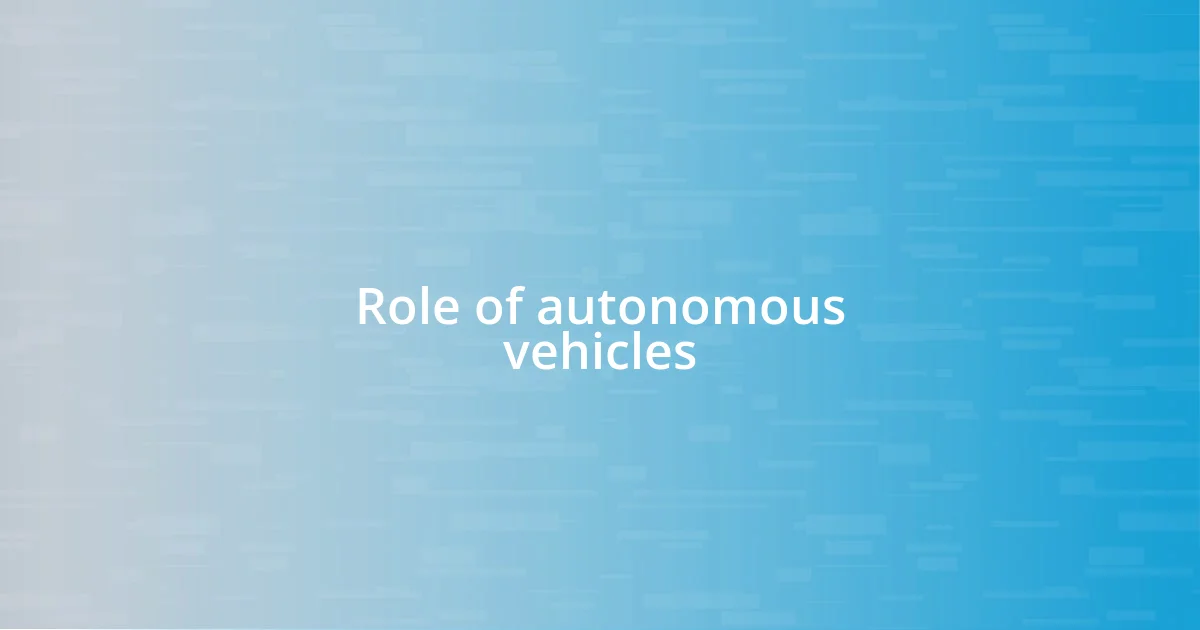
Role of autonomous vehicles
Autonomous vehicles are poised to revolutionize the way we think about transportation. I vividly remember the feeling of sitting in a self-driving car for the first time, marveling at how it navigated complex intersections without any human intervention. It made me realize that these vehicles aren’t just a gimmick; they represent a fundamental shift in road safety and efficiency. Imagine a world where accidents are significantly reduced and traffic congestion becomes a thing of the past—it’s a compelling vision!
As I reflect on the impact of autonomous vehicles on traffic management, I can’t help but consider their potential to communicate with smart infrastructure. I often think about how a connected network of self-driving cars could relay real-time data back to traffic signals, adjusting their timing based on the flow of vehicles. This seamless interaction could ensure that cars experience fewer stops, leading not only to shorter travel times but also to reduced emissions. Isn’t it exciting to envision cities where you can take a leisurely drive without the stress of stop-and-go traffic?
Moreover, the emotional implications of autonomous vehicles can’t be overstated. Recently, I spoke with a friend who lives in a bustling city. She shared her relief at the thought that she could one day send her kids off in a self-driving car, eliminating her own worries about their safety while navigating heavy traffic. This sentiment resonates deeply with many parents today. The anticipation of safer roads for our loved ones, combined with the convenience of not needing to park, is an enticing prospect that I believe we will genuinely embrace.
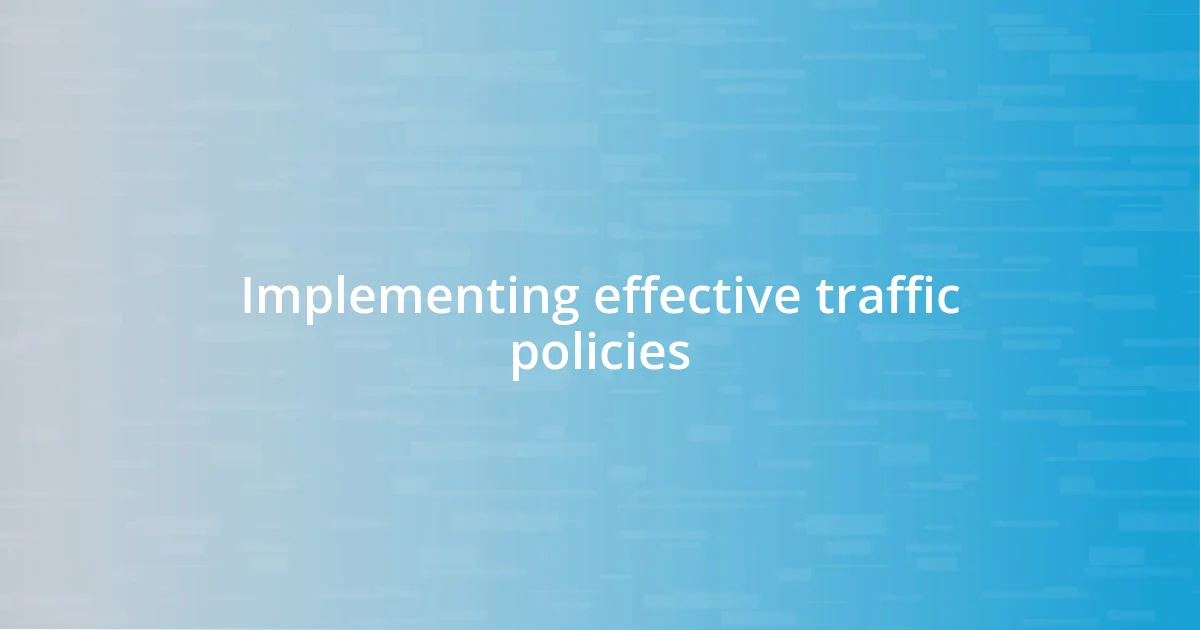
Implementing effective traffic policies
Effective traffic policies hinge on a blend of regulation and innovation. I recall attending a town hall meeting where residents voiced their concerns over dangerous intersections. It struck me how policy changes—like reduced speed limits coupled with enhanced crosswalks—could significantly reshape community safety. Can you picture a neighborhood where families feel at ease letting their children roam freely because they trust the road design?
In my experience, collaboration between policymakers and technology experts is crucial. A city I once observed adopted a comprehensive traffic policy that included input from local citizens, which was refreshing. They utilized data from traffic patterns and community feedback to establish carpool lanes, reducing congestion while promoting a sense of collective responsibility. I often wonder how many other communities could benefit from this approach, creating a more inclusive dialogue around traffic management.
When implementing effective traffic policies, education plays a pivotal role. I’ve seen firsthand how public campaigns promoting safe driving can alter behaviors over time. Just the other day, a friend mentioned how a recent awareness initiative about distracted driving had resonated with her. This leads me to ask: what if we made such education an integral part of how we shape our roads and behaviors? By fostering a culture of safety, we not only change individual habits but also pave the way for a more harmonious driving environment.








